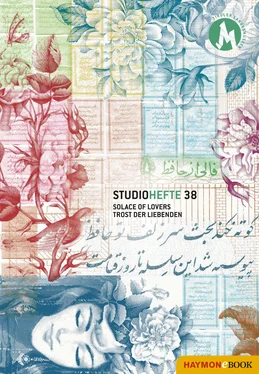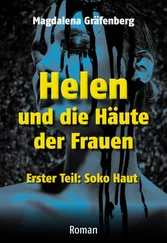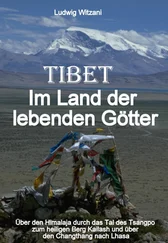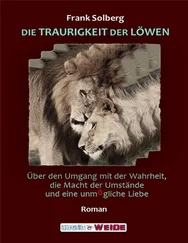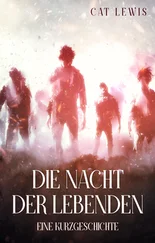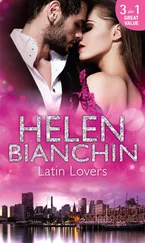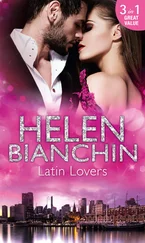SOLACE OF LOVERS
TROST DER LIEBENDEN
TIROLER LANDESMUSEUM FERDINANDEUM
16.10.2020–31.1.2021

ON “SOLACE OF LOVERS”
Peter Assmann
PREFACE
INTRODUCTION TO THE EXHIBITION
Yashar Samimi Mofakham, Tarlan Rafiee
COMMENTARY TO POLAK’S “THE AUSTRIAN TEACHERS IN PERSIA”
Yashar Samimi Mofakham
THE AUSTRIAN TEACHERS IN PERSIA
Jakob Eduard Polak
LIKE THE WIND IN THIS WORLD ...
Peter Leisch
FIVE REALMS OF BEING
A discourse on the Persian poetical world
Dariush Shayegan
THE PERSIAN POETIC SOUL
A brief on Iranian Art
Tarlan Rafiee, Yashar Samimi Mofakham
THE ARTISTS
Yashar Samimi Mofakham
MAZDAK AYARI
REZA BANGIZ
NARGESS HASHEMI
FARAH OSSOULI
TARLAN RAFIEE
JAZEH TABATABAI
PARVIZ TANAVOLI
APPENDIX
GLOSSARY
SELECTED BIBLIOGRAPHY
THE PUBLICATION
THE EXHIBITION
ACKNOWLEDGEMENTS
IMAGE CREDITS
IMPRINT
In any attempt – in the spirit of a “lover” – to approach a deeper cultural understanding in connection with Iran, one does well to bear in mind that the concept of the nation, especially in the European tradition, is less than helpful. Iran must rather be seen as a continent, offering an immense diversity of landscapes, temperatures, people, nationalities and even religions, but also striking aspects of a common cultural “conjoinedness”. Within this interpretation of the concept, this “continent” is based above all on a common culture of language and a deep love and reverence for its most creative aspects in the form of literature, a literature that connects the Iranian Arab on the Persian Gulf with the bazaar trader in the Iranian capital Tehran. As a matter of course they are familiar with the most prominent poets writing in Farsi, the language of Iran, which reaches far beyond the country’s present borders and is the medium of the history of spiritual and physical travel between the Far East and the Middle East. Marco Polo (1254–1324), for example, spoke Farsi and was therefore able to provide Europe in the High Middle Ages with astonishing insights into the Far East. Whether he did so on the basis of first-hand observation or well-told stories is not so important, since Iranian life is always connected in all its diverse aspects with the broadening use of the Iranian language.
Perhaps more so than any other language, the literature of Iran is intensively concerned with human relationships, including relationships between individuals, with nature and with different aspects of the divine. Again and again it is love that provides the drive, the process and also the goals for the wonderful use of language. This language as art also guides the visual arts. For centuries, the pictorial element has been a connecting experience shaped by calligraphy, which is seen as an art form in its own right, by splendid ornamentation and by illustrations as a narrative accompaniment. Notwithstanding the truly monumental aspects – a visit to the royal city of Isfahan, for example, has astonished travellers for centuries –, this is an artistic tradition in which there is a consistent link to the individual, to personal encounters, to the intimate moment, which refuses to be overwhelmed. Like so much else from Europe, Iran would have to wait until the 19 thcentury to understand the concept of the picture as a self-contained commodity.
Significantly enough, the following lines by the poet Saadi (ca. 1213–ca. 1291/1292) from his “Rose Garden” are to be found in the lobby of the UN building in New York (translation by M. Aryanpoor):
“Human beings are members of a whole,
In creation of one essence and soul.
If one member is afflicted with pain,
Other members uneasy will remain.
If you have no sympathy for human pain,
The name of human you cannot retain.”
It was also this fascination with the compelling nature of poetic language that first enabled a European audience to gain a deeper insight into these worlds in modern times. In his “West-Eastern Diwan” (published in 1819 and again in an extended version in 1827), Johann Wolfgang von Goethe (1749–1832) was inspired not only in linguistic terms by the work of Hafez (ca. 1315–ca. 1390), probably the most significant poet in the Farsi language. An Austrian element in this artistic enterprise was provided by the poetess Marianne von Willemer (1784–1860), who was born in Linz and whose texts Goethe incorporated into the work without mentioning her name. On the anniversary of the death of Hafez, who died so many centuries ago, thousands of people still flock to his tomb in Shiraz every year. Incidentally, this city not only lent its name to the eponymous wine, it was also the birthplace of this drink, which even Ayatollah Ruhollah Khomeini (1902–1989) praised in his early poems.
The deeper their enquiry into this “continent” of Iran, the greater the number of apparent contradictions found by Western travellers, who are confronted yet again with the huge discrepancy between the propagandistic spin of Western media and the reality to be experienced on the ground. One particularly striking aspect of this is the natural hospitality, which manifests itself in so many ways. A traveller in Iran is borne by the language of love and the solace of a life on a search – an experience that has been described so vividly again and again in a wide variety of travelogues.
The mission of this exhibition organised by the Tyrolean State Museums is to communicate a little of this fascination in as direct a manner as possible. It is not the many Iranian exiles whose art is presented here, but artists who have been living in the country for decades and developed their art there. The selection deliberately includes many artists whose names are unfamiliar to even the progressive expert, and these names represent artistic positions that require careful exploration. That is the role of our exhibition and this book. Our special thanks go to the curators Tarlan Rafiee and Yashar Samimi Mofakham, whose great personal commitment has made this project possible with the very substantial support of the KLOCKER FOUNDATION. We are also grateful to the authors of this accompanying book, who have joined us as travel companions on our journey to the Iranian “Solace of Lovers”. There are still so many places to visit on the cultural “continent” of Iran.
Last but not least, this Iranian journey has also led us to our own collections: the Artuqid bowl is a highlight of the Mediaeval Collection at the Ferdinandeum, and in the Library Collection, our “Iranian eye” discovered a series of 19 thcentury illustrations. And the journey is not over yet.
Peter Assmann
“The first creation of all things, the pearl of intellect was endowed with three qualities, three children named Beauty, Love and Sorrow. A luminosity appeared in him when the Beauty gazed upon himself, and he smiled. From that smile thousands of cherubim appeared. Love, the middle brother, was so intimate with Beauty that he could not take his eyes from him and was constantly at his side. When Beauty’s smile appeared, a consternation befell Love, who was so agitated that he wanted to move. Sorrow, the youngest, clung to him, and from his clinging the heaven and earth appeared.”
Читать дальше
